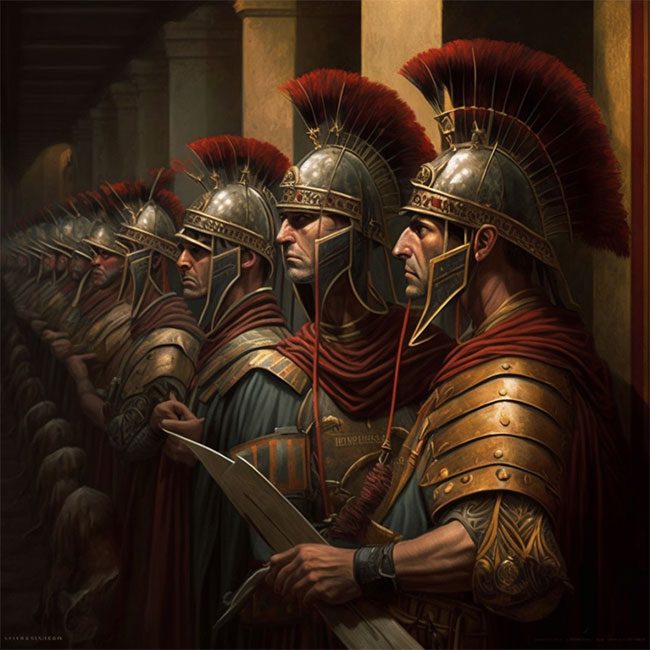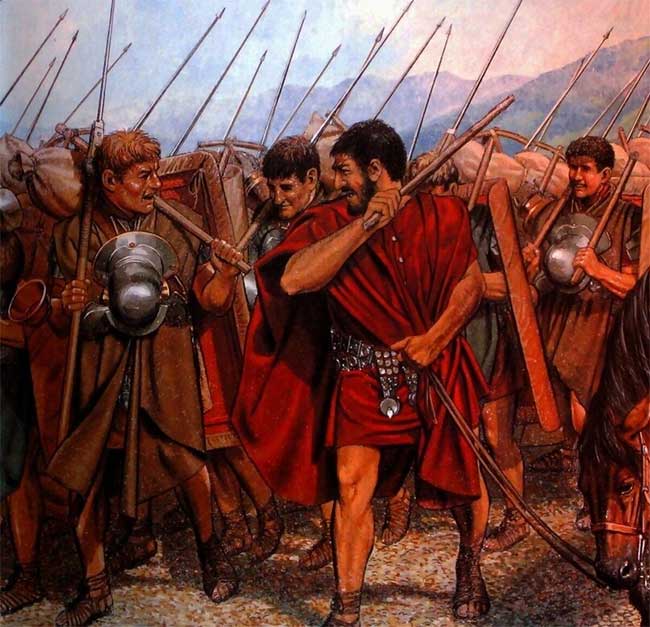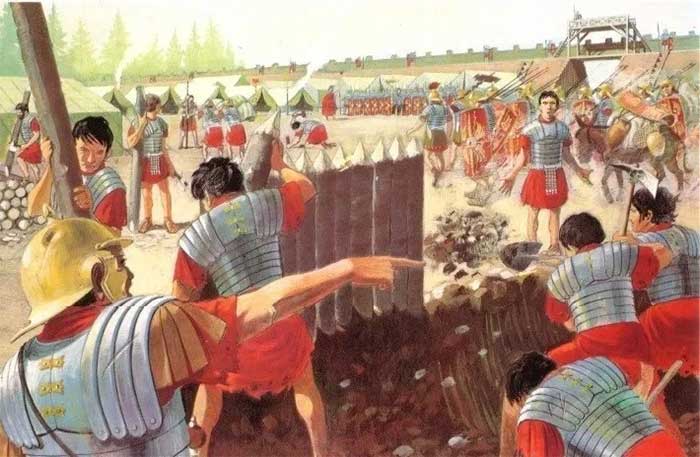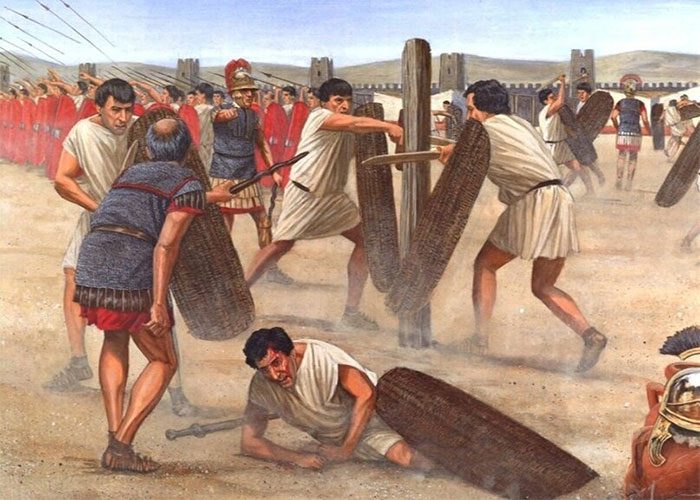New recruits underwent a rigorous training process to become the “war machines” of the Ancient Roman Empire.
The Roman army boasts the highest victory rate in history. For over a thousand years, the Roman legions and their auxiliary forces dominated battlefields across Europe, Africa, and Asia.
Each legion consisted of approximately 5,000 men. On average, about 120 soldiers retired each year after 25 years of service. Consequently, around 250 new recruits were needed annually to fill the gaps left by retirees, injured soldiers, and those who had fallen in battle.

Roman Warrior. (Illustrative image: Zhihu).
Recruitment of New Recruits is a Strict Selection Process
The Roman army preferred recruiting from rural areas rather than cities because men from the countryside were generally stronger and better adapted to harsh environments. Those engaged in manual labor, such as butchers, blacksmiths, or hunters, were the most frequently recruited.
The Romans also favored recruiting soldiers from certain regions known for their bravery and as the birthplace of outstanding warriors. For instance, the province of Illyricum was considered the most important source of new recruits for Rome.
During the selection process, military doctors meticulously examined each recruit. Candidates had to be in robust physical condition and at least 1.68 meters tall (the average height of ancient Roman men was 1.65 meters). Each recruit had to be a Roman citizen and at least seventeen years old. Those without Roman citizenship had no choice but to join the auxiliary forces. However, having a letter of recommendation from a senior officer or a veteran would significantly increase one’s chances of joining the army.

All candidates for the Roman army had to be strong, tall, and Roman citizens. (Image: ZME).
Additionally, candidates had to be single. If they were married, their marriage would be annulled due to military obligations.
The requirements to join the ancient Roman army were exceedingly strict, as being selected for military service meant a higher salary, better food, and medical care compared to ordinary citizens. Moreover, if they survived after 25 years of service, they would receive a pension. In contrast, soldiers in the auxiliary forces would be granted Roman citizenship upon completing their service.
New Recruits Must Overcome a Grueling Trial Phase
After being recruited, they must undergo four months of rigorous training. This period includes forced marches equipped with heavy weaponry, training in weapon usage, and formation drills. Recruits would be pushed to their physical and mental limits.
Recruits were also allowed to apply for discharge and leave at any time during the four-month training period.

If they survived the four-month recruitment training, they would swear loyalty to the Roman Empire and receive a tattoo as a mark, subsequently becoming official Roman soldiers. (Image: ZME).
The training period included basic training in:
1. Full-Scale Armed Marching
One of the first things recruits are taught is marching. To maintain combat formation, it is crucial that all qualified soldiers possess sufficient endurance and know how to march at the same pace.
Recruits must carry 20 kg of equipment and complete a 29 km march within six hours. In the later stages of training, they must be able to complete a 35 km march.
Recruits would march in all weather conditions. They would frequently have to traverse hills and dense forests, as maintaining formation on difficult terrain would be more challenging.
In addition to marching, recruits also needed to learn various combat maneuvers and formations. Interestingly, Roman recruits were also required to learn how to swim, as the Romans believed swimming was an excellent exercise to keep soldiers healthy and fit.

One of the first things recruits are taught is marching. (Illustrative image: Zhihu)
2. Building Camps
When the Roman legions marched through enemy territory, it was crucial to establish a military camp for overnight rest and self-defense. Therefore, each Roman soldier was equipped with a shovel as part of their standard gear.
During the new recruit training process, Roman military trainers made significant efforts to teach recruits how to set up a camp. A standard Roman military camp needed to include three parts: a trench, a wall, and a fence, and it was required to be constructed within five hours.

The trainers of the Roman army made significant efforts to teach recruits how to set up a camp. (Illustrative image: Zhihu).
3. Weapons Training
Recruits had to train twice a day, usually outdoors. Weapon instructors taught each recruit how to engage in direct combat, throw javelins, maneuver, and form combat formations. During training, they intentionally used wooden swords and shields that were double the weight of real equipment to build strength in the recruits.
Throughout training, recruits were taught to thrust more than to slash with their swords. This is because, on the battlefield, thrusting is significantly more effective; even a wound just five centimeters deep can be fatal. In contrast, slashing rarely kills an enemy, as armor and bones can deflect such attacks.
Pushing attacks also allowed soldiers to hide behind large shields and conserve energy to continue fighting for hours.
In addition to training with swords and shields, recruits were also taught how to throw javelins and ride horses fully armed. About 25 percent of soldiers would be trained in archery.

Recruits were taught to thrust more than to slash with their swords. (Illustrative image: Zhihu).
4. Learning Discipline
Discipline is one of the most important aspects of the ancient Roman army. Every ancient Roman soldier had to strictly adhere to discipline and act in the interest of the entire legion.
During training, recruits were also made acutely aware that falling asleep while on night duty or not wearing a sword when setting up camp could be punished by death. They would also quickly learn that they must absolutely obey their superiors and resolutely carry out every command from them!
From this selection and basic training process, it is easy to understand why the Roman legions became such a formidable force on ancient battlefields.


















































